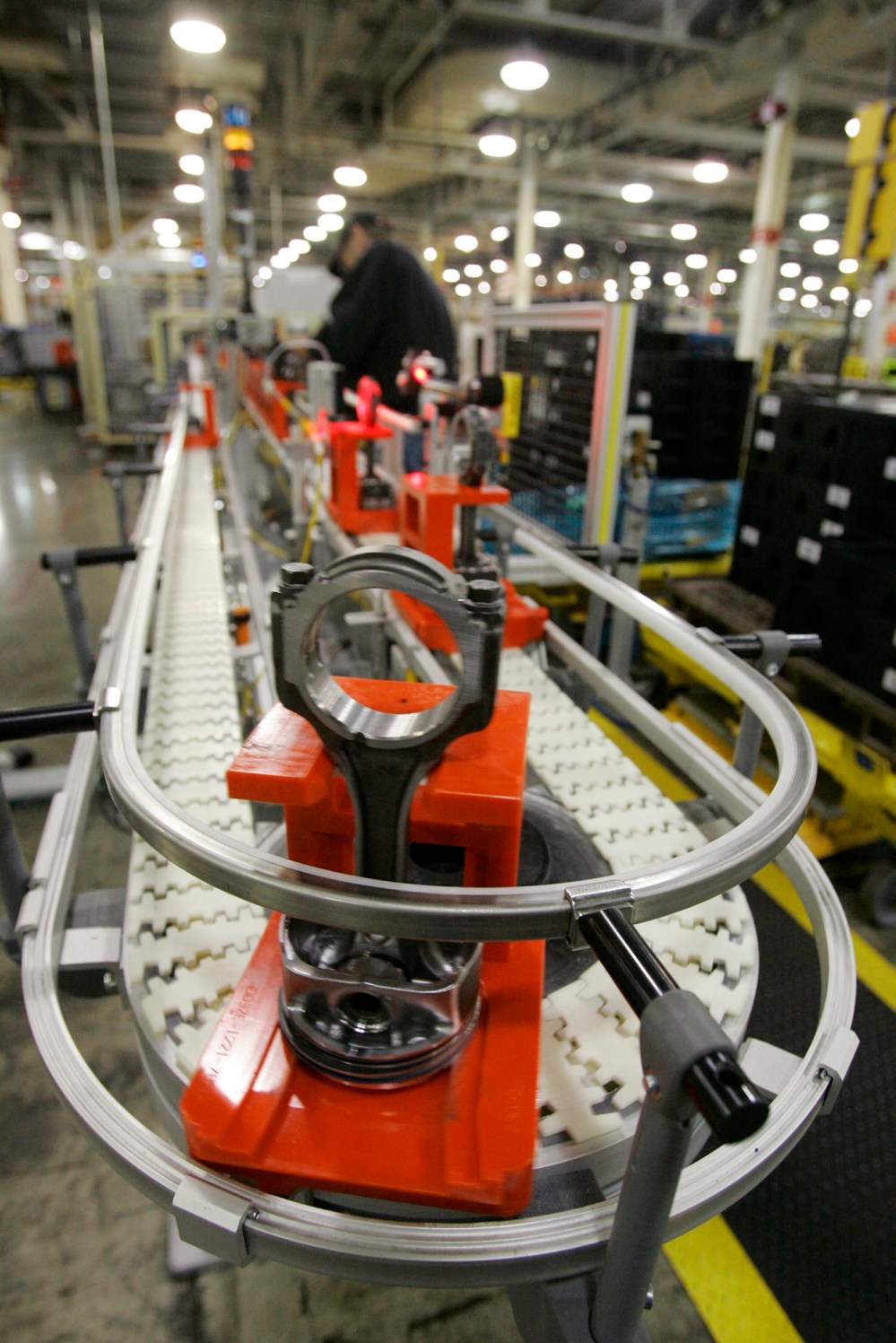AUTO TECH: EcoBoost offers performance and economy
Advertisement
Read this article for free:
or
Already have an account? Log in here »
To continue reading, please subscribe:
Monthly Digital Subscription
$1 per week for 24 weeks*
- Enjoy unlimited reading on winnipegfreepress.com
- Read the E-Edition, our digital replica newspaper
- Access News Break, our award-winning app
- Play interactive puzzles
*Billed as $4.00 plus GST every four weeks. After 24 weeks, price increases to the regular rate of $19.00 plus GST every four weeks. Offer available to new and qualified returning subscribers only. Cancel any time.
Monthly Digital Subscription
$4.75/week*
- Enjoy unlimited reading on winnipegfreepress.com
- Read the E-Edition, our digital replica newspaper
- Access News Break, our award-winning app
- Play interactive puzzles
*Billed as $19 plus GST every four weeks. Cancel any time.
To continue reading, please subscribe:
Add Winnipeg Free Press access to your Brandon Sun subscription for only
$1 for the first 4 weeks*
*$1 will be added to your next bill. After your 4 weeks access is complete your rate will increase by $0.00 a X percent off the regular rate.
Read unlimited articles for free today:
or
Already have an account? Log in here »
Hey there, time traveller!
This article was published 05/06/2009 (5965 days ago), so information in it may no longer be current.
May 19, 2009 marked the start of production for Ford’s new high-tech EcoBoost engine. Available this summer on the 2010 Lincoln MKS, Lincoln MKT, Ford Taurus SHO and Ford Flex, the EcoBoost will be offered in up to 90 percent of all Ford models as production ramps up and new models are introduced over the next few years.
What makes the EcoBoost a big deal is that this engine produces lower emissions, more performance and up to 20-per-cent better fuel economy all in the same package.
The EcoBoost isn’t a flash-in-the-pan design. Ford engineers have been working on this for a few years along with suppliers such as Bosch, who supply fuel-system parts. Ford’s Cleveland engine plant has had $55 million invested in new tooling and facilities to build this engine (building new engines isn’t cheap even in an existing plant!).

When fully ramped up, Ford expects to deliver 750,000 vehicles a year with this new engine in North America and almost double that worldwide. Initially, the EcoBoost will be a 3.5 litre V6 design, but inline 4 cylinder models will soon follow.
The 3.5-litre EcoBoost V6 has the power of a V8 engine but the economy of a V6. With 355 horsepower it should be responsive, but it’s the broad torque band that will really make the engine noteworthy. To accomplish this, the engineers have integrated three key technologies: direct fuel injection, turbocharging and computer-aided design (CAE) to produce this high-performance powerplant.
Designers looked at even the small items. For example, the fuel line on most fuel-injected engines runs to one fuel rail and then on to the other fuel rail on a V-style engine. On the Ecoboost, the fuel line splits into a Y design and feeds both fuel rails at the same time. This may not seem like a significant change, but it reduces the fuel-pressure pulsations that occur every time an injector fires, so fuel delivery is more accurate and engine noise is reduced. Since the Ecoboost fuel system operates at 2,150 psi — about 35 times more than conventional port injection — this feature takes on new importance.
Testing the engine takes place both on the road and on the dyno. During development, the Road Cycle Durability test simulates real-world customer driving. The engine is started 1,000 times from cold and then operated for extended periods at peak torque and horsepower. During the test, engine-coolant temperatures are varied between 12C and 95C. If you drove like this, some would consider it abuse.
Ford runs this single test for 1,000 hours of extreme engine operation so that it can represent more than 100,000 km of customer operation.
"This was a critical test for us, and the EcoBoost fleet passed with flying colours," said Brett Hinds, Ford’s Advanced Engine Design and Development manager.
The high pressures of the direct fuel injection cause the fuel to break down into a fine mist that is instantly mixed with the incoming air. All the fuel supports combustion, which contributes to the 20-per-cent better fuel economy but also produces 15-per-cent fewer CO2 emissions compared to another engine with similar power. Direct injection also provides a quick throttle response, which makes the engine feel even more powerful.
Getting large displacement power from a small displacement engine is accomplished by turbocharging. The EcoBoost 3.5 litre V6 will use a turbocharger for each bank, maximizing the efficiency of the engine. The turbochargers completely fill the cylinders with air, so maximum torque is achieved over a wide rpm range but without that typical surge of power at select rpm you might find in other turbochaged engines. Instead, the dual turbocharger system has a pressure-controlled wastegate with an internal valve that balances the output of each turbo within 3/10th psi of the other turbo, so power is smooth and even over a wide rpm range.
During final assembly of the engine, each EcoBoost engine is turned by an electric motor at speeds from 60to 600 RPM to simulate running conditions. This "cold test" checks for proper operation of the turbocharger output before the engine ever leaves the factory. In addition, all the data from assembly is recorded for each engine in the Ford database, so that engineers can quickly follow the build sequence of every engine to maintain quality control.
There are years of unseen work that goes into the production of every new engine. The EcoBoost is an example of what can happen when standards and design goals are set high.
Jim Kerr is an experienced mechanic, instructor of automotive technology, freelance journalist and member of the Automobile Journalists’ Association of Canada.
kerr.jim@sasktel.net

